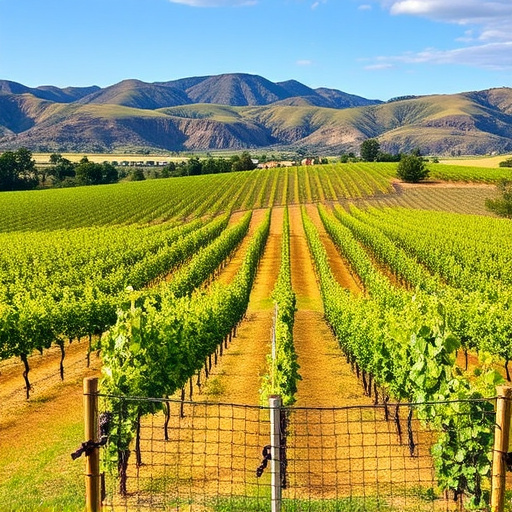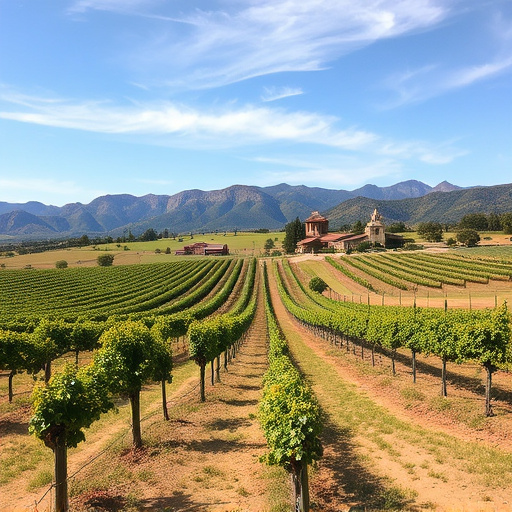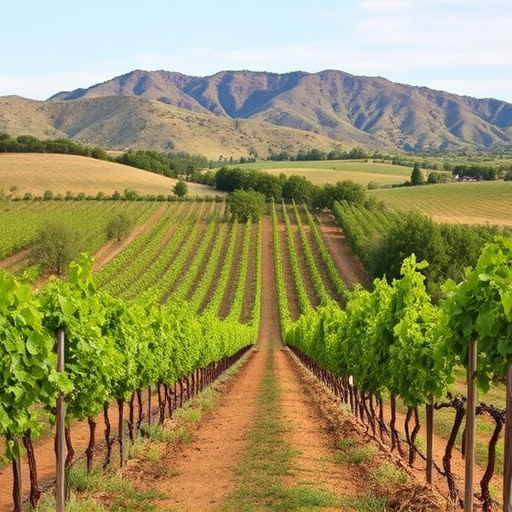The Sonoita region in Arizona's Sonoran Desert boasts diverse microclimates that significantly impact grape growth and wine flavor, contributing to its reputation for high-quality, small-batch wines with distinct regional character. Wine enthusiasts visiting the vineyards in Sonoita, AZ gain a deeper appreciation for each bottle's unique qualities by understanding these microclimates. The region's varied landscapes and microclimates allow different grape varieties to flourish, resulting in an enticing array of microclimate wines that draw wine lovers. Harvest times, grape ripening, and yields are all influenced by these microclimates, shaping the diverse wine offerings from vineyards in Sonoita, AZ. Sommeliers recommend pairing local wines with specific cuisines based on their characteristics.
Uncover the enchanting world of microclimates in the vibrant Sonoita region of Arizona, where neighboring vineyards thrive amidst diverse conditions. This article takes you on a journey through the unique terroir and viticulture that define these wineries. From understanding microclimates to exploring harvest times and sommelier insights on pairing, discover how these factors shape the distinctive characteristics of wines from around Sonoita. Dive in to uncover the secrets behind the region’s renowned vineyard offerings.
- Understanding Microclimates: The Unique Conditions of Sonoita Region Vineyards
- A Walk Through Neighboring Sonoita Vineyards: Diverse Terroir and Viticulture
- Wine Characteristics: Unveiling the Differences in Microclimate Wines
- Exploring Harvest Times and Yield Variations in Sonoita's Neighboring Vineyards
- Sommelier Insights: Serving and Pairing Microclimate Wines from Sonoita Region Vineyards
Understanding Microclimates: The Unique Conditions of Sonoita Region Vineyards
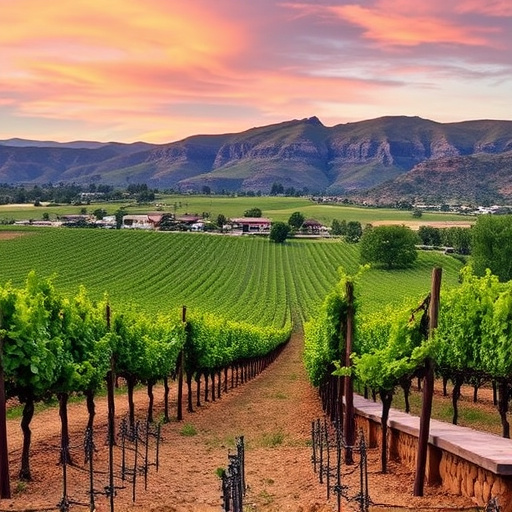
The Sonoita region, nestled in Arizona’s Sonoran Desert, is renowned for its distinctive microclimates that vary dramatically across neighboring vineyards. Understanding these unique conditions is key to appreciating the character and quality of wines produced in this area. Each vineyard experiences a distinct combination of temperature, humidity, wind patterns, and sunlight exposure, all of which influence grape growth and wine flavor profiles.
Microclimates in Sonoita region vineyards range from cool, high-altitude regions that mirror conditions found in more temperate climates, to hotter, lower-lying areas reminiscent of the desert’s arid environment. These variations allow for a diverse range of grape varieties to thrive, contributing to the region’s reputation for producing distinctive, small-batch wines that showcase both regional character and individual vineyard terroir. For wine enthusiasts exploring vineyards in Sonoita AZ, understanding these microclimates offers a fascinating insight into how each bottle reflects the distinct conditions where the grapes were grown.
A Walk Through Neighboring Sonoita Vineyards: Diverse Terroir and Viticulture

The vineyards scattered across the scenic Sonoita region in Arizona showcase a remarkable diversity of terroir, each with unique characteristics that influence wine production. This neighboring area has become renowned for its microclimate wines, offering a captivating journey for wine enthusiasts and viticulturists alike. A stroll through these nearby vineyards reveals a fascinating spectrum of landscapes: from elevated hillsides bathed in intense sunshine to lower-lying areas sheltered by surrounding mountains, each site presents distinct challenges and opportunities for grape cultivation.
The region’s varied microclimates are a result of topographical features and the interplay of sun, wind, and elevation. These subtle differences translate into diverse grape varieties thriving in specific locations. Some vineyards embrace the warm, dry conditions ideal for robust red grapes like Syrah and Grenache, while others favor cooler pockets for delicate white wines made from Sauvignon Blanc or Riesling. This terroir diversity ensures that Sonoita AZ vineyards produce a captivating array of microclimate wines, attracting wine lovers curious to explore the region’s unique offerings.
Wine Characteristics: Unveiling the Differences in Microclimate Wines
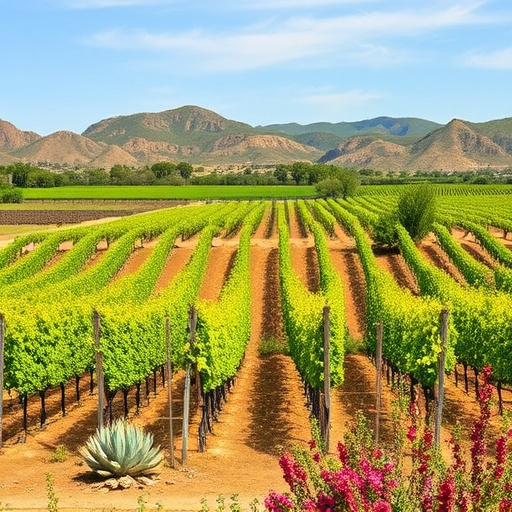
The distinct microclimates of neighboring vineyards in Sonoita, AZ, play a pivotal role in shaping the unique characteristics of wines produced in this region. Each vineyard’s proximity to mountains, valleys, and the surrounding desert influences temperature, sunlight exposure, and wind patterns, resulting in diverse wine profiles.
Wines from Sonoita are renowned for their vibrant acidity, often showcasing flavors that range from fruity and crisp to earthy and complex. These differences can be attributed to variations in growing seasons, with some vineyards experiencing longer days and warmer temperatures, leading to riper grapes, while others benefit from cooler evenings that preserve freshness. The result is a captivating spectrum of wines, allowing connoisseurs to explore the intricate dance between terroir and taste in the heart of Arizona’s vibrant viticultural region.
Exploring Harvest Times and Yield Variations in Sonoita's Neighboring Vineyards
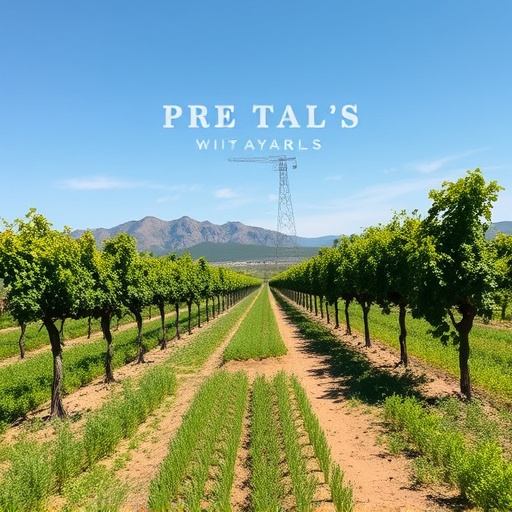
The microclimate in and around Sonoita, Arizona, presents a fascinating interplay of factors that significantly influence harvest times and yield variations among neighboring vineyards. Each vineyard, nestled in unique microclimates, experiences subtle differences in temperature, sunlight exposure, and wind patterns, leading to distinct ripening timelines for grapes. These variations result in a captivating array of wine styles and qualities.
For instance, some vineyards in the region benefit from slightly cooler temperatures, allowing grape varieties like Syrah and Tempranillo to slowly mature, yielding rich, complex wines with balanced tannins. In contrast, warmer microclimates favor faster ripening, as seen in Cabernet Sauvignon and Zinfandel, offering vibrant, fruit-forward wines. Furthermore, yield differences are noticeable; areas protected from strong winds might see higher grape concentrations, while windier regions can lead to lower yields but with intenser flavor profiles. Exploring these variations allows wine enthusiasts and sommeliers to discover the unique character of each vineyard, making the Sonoita region a fascinating destination for microclimate wine comparisons.
Sommelier Insights: Serving and Pairing Microclimate Wines from Sonoita Region Vineyards
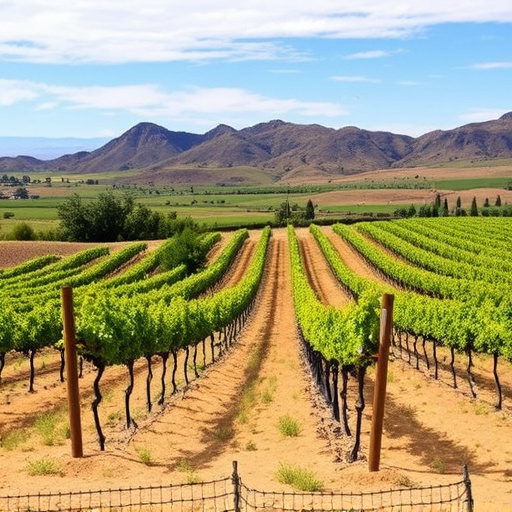
When enjoying microclimate wines from the neighboring vineyards in Sonoita, Arizona, sommeliers emphasize the unique flavor profiles these regions offer. Each vineyard, with its distinct microclimate, contributes to the character of the grapes, resulting in a diverse range of tastes and aromas. For instance, some vines may benefit from warmer days and cooler nights, creating balanced, complex wines that pair beautifully with various cuisines.
Pairing these local wines can enhance the dining experience for visitors to Sonoita region vineyards. Light, crisp white wines made from grapes grown in cooler microclimates might complement seafood or lighter vegetarian dishes. In contrast, fuller-bodied reds from warmer pockets could be a perfect match for hearty meat dishes or robust cheeses. Sommeliers often recommend considering the terroir and the stories behind each bottle to make informed pairing choices, ensuring that the wine enhances the overall culinary journey in these picturesque vineyards.
The vineyards of Sonoita, Arizona, showcase a remarkable microclimate diversity that significantly influences wine characteristics. By comparing neighboring regions, we’ve uncovered unique terroir expressions, from vibrant acidity in cooler areas to robust tannins in warmer pockets. This variety allows sommeliers to offer diverse options for every palate, making Sonoita’s microclimate wines a true delight for wine enthusiasts exploring the region’s vibrant culinary and viticultural scene. Discovering these subtle differences enriches our appreciation of local vintages and highlights the intricate relationship between climate, soil, and grape quality in Arizona’s thriving vineyards.

